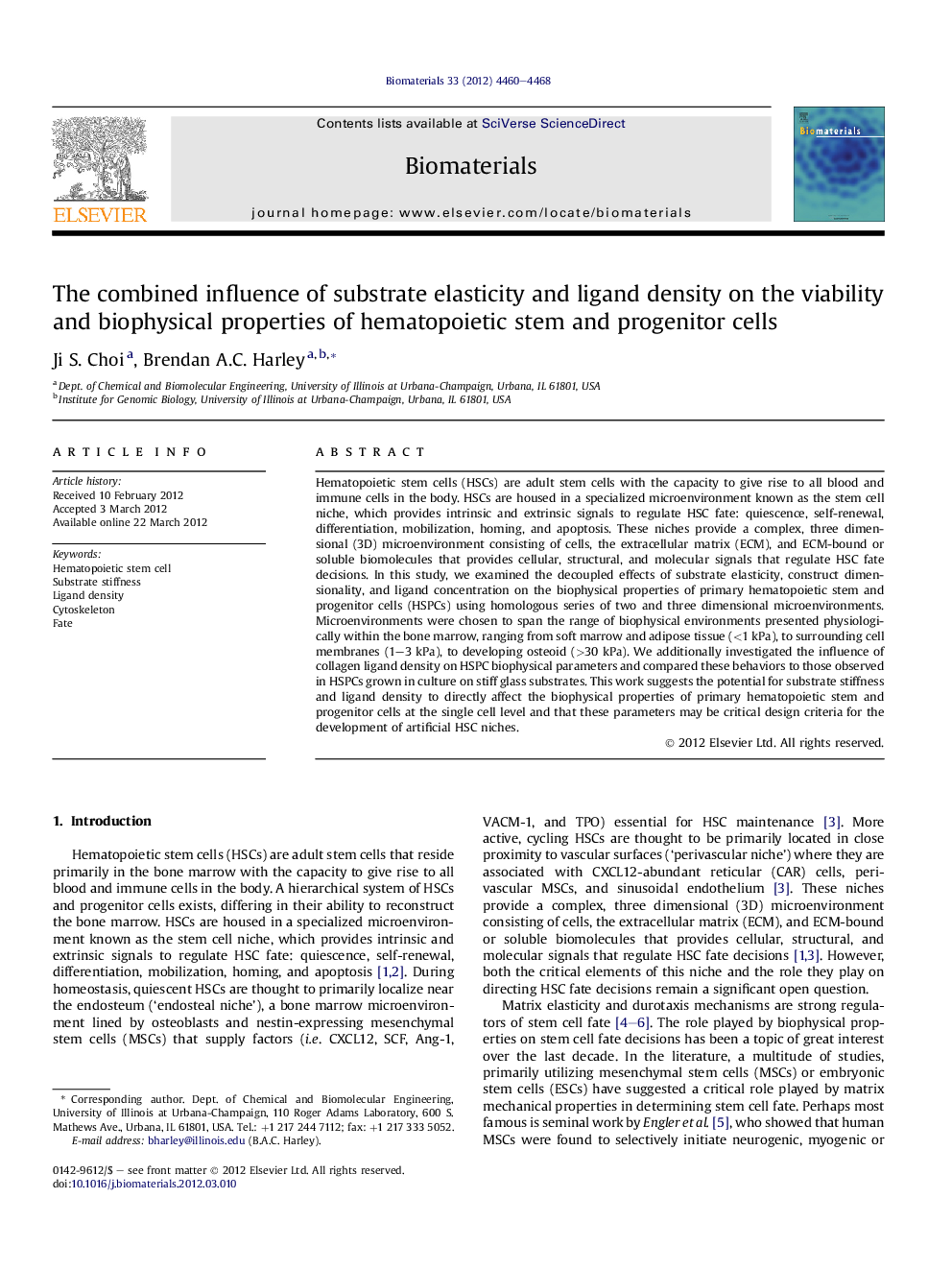| Article ID | Journal | Published Year | Pages | File Type |
|---|---|---|---|---|
| 6781 | Biomaterials | 2012 | 9 Pages |
Hematopoietic stem cells (HSCs) are adult stem cells with the capacity to give rise to all blood and immune cells in the body. HSCs are housed in a specialized microenvironment known as the stem cell niche, which provides intrinsic and extrinsic signals to regulate HSC fate: quiescence, self-renewal, differentiation, mobilization, homing, and apoptosis. These niches provide a complex, three dimensional (3D) microenvironment consisting of cells, the extracellular matrix (ECM), and ECM-bound or soluble biomolecules that provides cellular, structural, and molecular signals that regulate HSC fate decisions. In this study, we examined the decoupled effects of substrate elasticity, construct dimensionality, and ligand concentration on the biophysical properties of primary hematopoietic stem and progenitor cells (HSPCs) using homologous series of two and three dimensional microenvironments. Microenvironments were chosen to span the range of biophysical environments presented physiologically within the bone marrow, ranging from soft marrow and adipose tissue (<1 kPa), to surrounding cell membranes (1–3 kPa), to developing osteoid (>30 kPa). We additionally investigated the influence of collagen ligand density on HSPC biophysical parameters and compared these behaviors to those observed in HSPCs grown in culture on stiff glass substrates. This work suggests the potential for substrate stiffness and ligand density to directly affect the biophysical properties of primary hematopoietic stem and progenitor cells at the single cell level and that these parameters may be critical design criteria for the development of artificial HSC niches.
